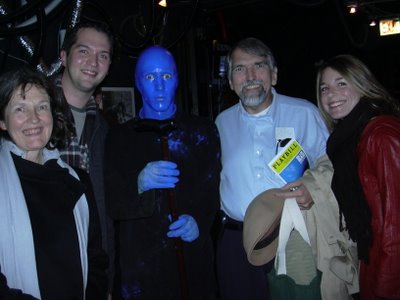Be not the first by whom the new are tried,Nonetheless, I usually find myself on the 2nd line of this quote rather than the first. Perhaps you'd think that being at home full-time recovering from a major illness would give me more opportunity to try things sooner. Unfortunately, about all I seem to run across early are funny videos on YouTube.
Nor yet the last to lay the old aside.
Anyway, philosophizing aside, I did want to describe a relatively new Google service that you may not have had a chance to look at. You have probably heard about RSS feeds and aggregators. The whole subject is quite complex, with the usual convoluted history and politics that rapidly evolving technology always has. Over the last few years, there have been a number of different approaches to handling feed aggregation. Attempts at comparing these different approaches are, frankly, unusably complicated. Because of all of that, I just hadn't been able to make much progress in figuring out what, if anything, I wanted to do with the whole area.
Some months ago, Google (as part of its overall plan for benign world domination) introduced their version of an aggregator, dubbed Google Reader:
http://www.google.com/readerIt was easy to set up, easy to use, and certainly meets my modest needs for reading blogs and other feeds. Implemented as a web application, it is available from any computer without needing to download anything. You login using the same ID you use for Gmail and the other Google services. Once you login you see a straightforward multi-pane browser. The left pane lists the feeds you have subscribed to, and which of those has new entries. Upon choosing a particular feed, the right pane shows postings from that feed in reverse chronological order, with the newest ones naturally at the top. Depending on how the feed is set up, what comes through in the right pane is either the full text of each posting (although not necessarily formatted quite the same way as the original) or a short version. Either way, you can click on the posting's title to get a new window with the full posting as seen in the original blog or feed.
Google has made it particularly easy to add more feeds with an 'Add Subscription' link. Clicking that brings up a small dialog box in which you can enter either a URL for a new feed, if you happen to know it already, or a search string, in which case the reader brings up in the right pane a list of matching possibilities which you can then subscribe to with a single click.
The Reader has other features which you can easily find for yourself, such as how to arrange your feeds into folders (which are really more like Gmail labels). So far, Google's Reader is complete ad-free.
I suppose I should wrap this up by recommending a few blogs. Let me hasten to say that it has been my experience that whenever someone tells me "you'll just love" book X, movie Y or website Z, there is at least a 60% chance that my reaction will not be one of love. (Why this is true remains one of the great mysteries of my life. The persona I project and the person I am on the inside must be truly out of sync.) So, I will simply say that I have found these blogs interesting and thought-provoking. They tell you very little about my own views of things.
- http://www.badastronomy.com/bablog: The Bad Astronomer. 'bad' here does not mean 'poor in quality', but it could mean several other things. Covers a wide variety of science related topics.
- http://www.pandasthumb.org/: The Panda's Thumb. Written by Francis Collins, an evolutionary biologist who wrote The Language of God: A Scientist Presents Evidence for Belief. Although himself a devout Christian, he spends a lot of time working against the Intelligent Design crowd.
- http://dilbertblog.typepad.com/the_dilbert_blog/: The Dilbert Blog. Remarkably insightful yet usually very funny observations and commentary by Scott Adams.
- http://www.longtail.com/the_long_tail/: The Long Tail. Commentary by Chris Anderson, the senior editor of Wired. His book with the same title explores in depth the impact that the widespread adoption of computer technology has made in the sheer number of choices consumers now have available.
Addendum: Ron Jeffries recently wrote about his experience switching from Bloglines to Google Reader, which very much mirrored my own. His posting was prompted by an earlier posting by Gina Trapani on the same topic.



